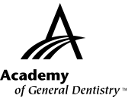|
Exercise No. 385
Subject Code: 734
Diagnosis & Treatment Planning
The 15 questions for this exercise are based on the article, Solitary neurofibroma: a rare occurrence on gingiva, on pages 28-31. This exercise was developed by Anthony S. Carroccia, DDS, MAGD, ABGD, in association with the General Dentistry Self-Instruction Committee.
|
Reading the article and successfully completing the exercise will enable you to:
- understand the appearance of neurofibromas;
- know the treatment and outcomes for neurofibromas; and
- consider neurofibroma in your differential diagnoses.
|

